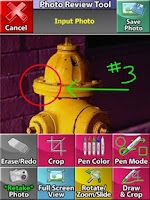 |
| Mobile App Development |
Benjaminy predicts, "It is the desktop client which is fading into the status of exception and "special case". In this new world, there will be only one kind of client. It will treat all devices as mobile devices – whether you happen to use the software on your desktop computer with 21" display, your mobile tablet (usually 7"-10" display) or your smartphone (typically 3"-4"), you get access to the same functionality and just about the same user experience." What do you think of this prediction? Can you image a software development strategy that covers all devices including desktops?
Benjaminy continues, "This implies several more characteristics which will make the new breed of enterprise software much more useful as well as much more fun, due to the rich context available to a mobile device:
- Location, movement (e.g. driving, walking, sitting down)
- Status (e.g. working alone, working at customer location, in a meeting, on the phone, or off-duty)
- Environment (e.g. in an office, a restaurant, a lecture room or a vehicle) etc.
Benjaminy envisions a world where there is only one kind of mobile application that fits all devices and desktops. He sees ERP solutions having an application layer that utilizes the mobile device features to add value to common everyday processes. The data collection functions and feedback available in mobile devices can be integrated with content management, business intelligence and geospatially aware features to develop more intelligent applications.
I read another article last week about the economics of mobile applications. The article suggested the economics of application development would trend toward one development strategy and methodology that would reduce the amount of work needed to support a wide variety of device types and operating systems. This article supports Benjaminy's prediction.
What do you think about it?
***************************************************
Kevin Benedict, SAP Mentor, SAP Top Contributor, Mobile and M2M Industry Analyst
Phone +1 208-991-4410
Follow me on Twitter @krbenedict
Join SAP Enterprise Mobility on Linkedin:
http://www.linkedin.com/groups?about=&gid=2823585&trk=anet_ug_grppro
Full Disclosure: I am an independent mobility consultant, mobility analyst, writer and Web 2.0 marketing professional. I work with and have worked with many of the companies mentioned in my articles.


